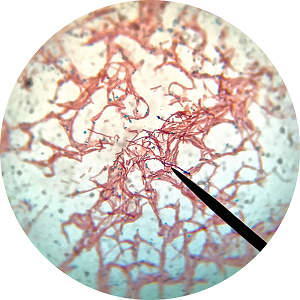
Over time, people have made clothes out of many varieties of material: cotton, silk, wool, and others. Recently, the MIT Media Lab took the art of making clothes to the next level. They invented a new type of material that uses bacteria to react to body moisture.
Specifically, the MIT Lab created a fabric that has dozens of tiny triangular holes. Covered by triangular flaps, trillions of single-cell organisms are placed inside the fabric. When a person wearing the material begins to sweat, the bacteria grows, thus causing the flaps to open up and release body heat. When the sweat evaporates, the bacteria compacts and the flaps go back down. This allows the body to cool off.
The bacteria used in this material is called
Bacillus subtilis natto
. A Japanese myth explains the discovery of these micro–organisms; it is said that a samurai went off to battle and left steaming soybeans in some straw wrapping. A few days later, he came back and saw that the soybeans were very sticky. The samurai didn’t know it at that time, but it was
Bacillus subtilis natto
that made the soybeans sticky. As the myth goes, this is the first time in history that the bacteria's unique capabilities were discovered.
Lining Yao, a PhD student who works for the MIT lab, stumbled upon the bacteria when looking for a safe substance that reacts to body moisture. The
natto
bacteria perfectly met these requirements; it is safe and absorbs moisture quickly. Yao’s team made the fabric by using a printer that squirts bacteria onto plastic in rows. Then, the team cut flaps in the plastic and sewed it into the material.
Yao's team is currently working with the company New Balance to develop a clothing that responds to body moisture but can also be washed. Their invention may completely change the way we think about clothing.
[Source:
Smithsonian Magazine
]

